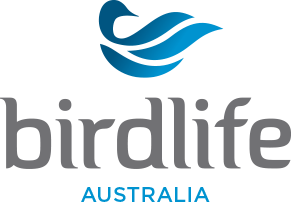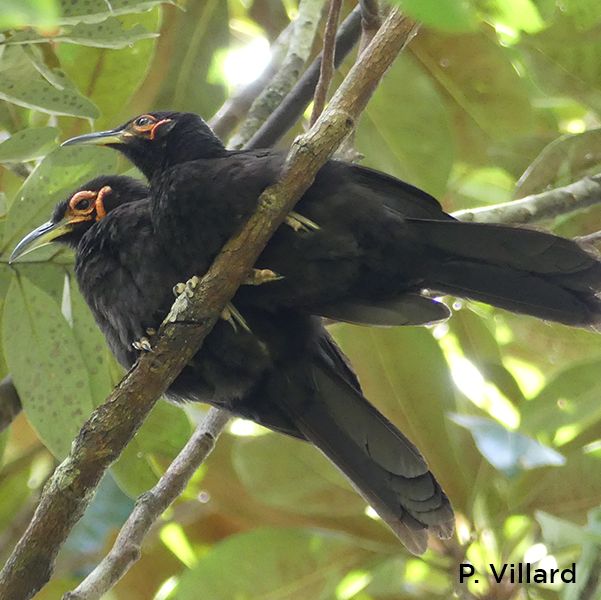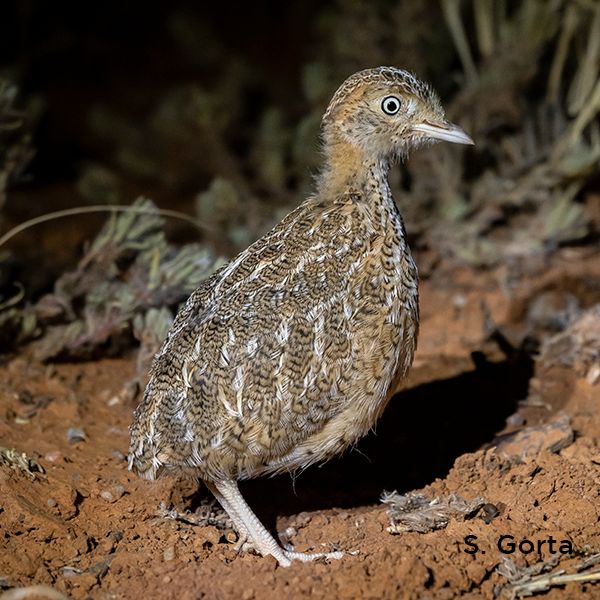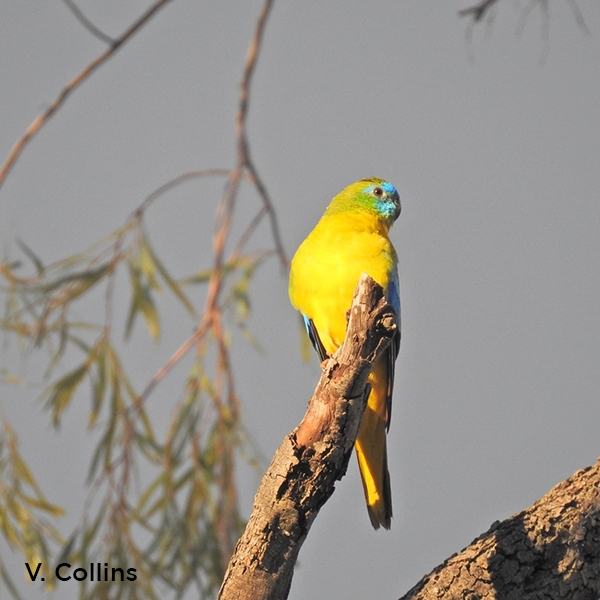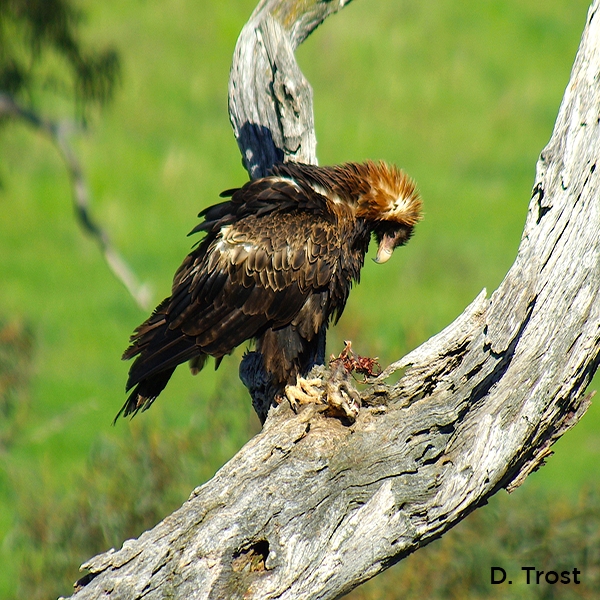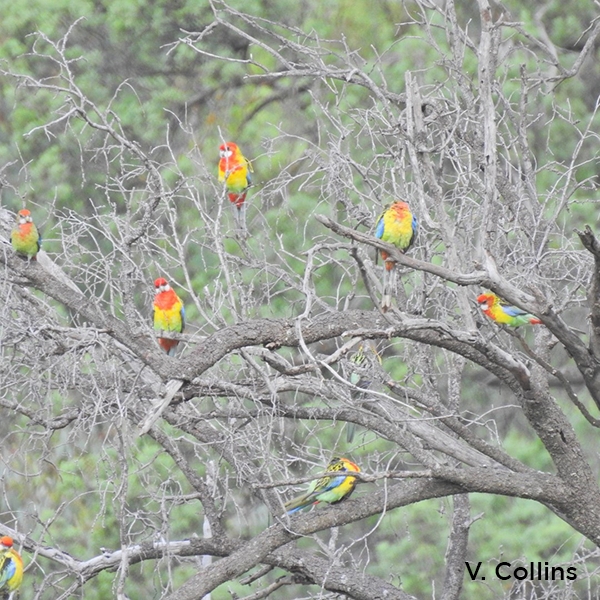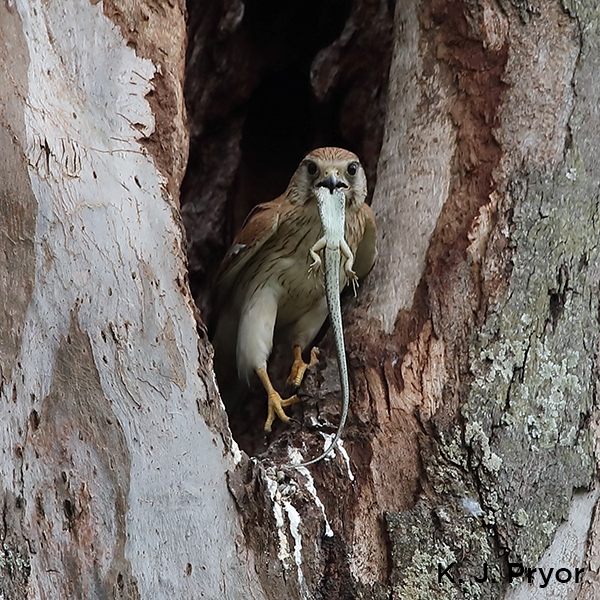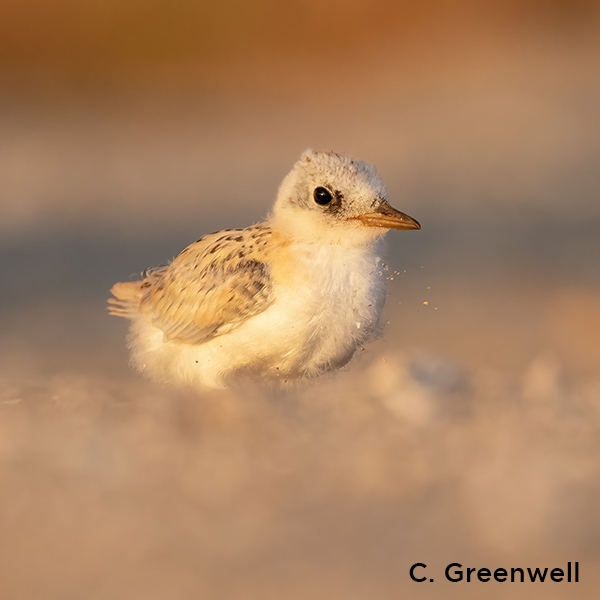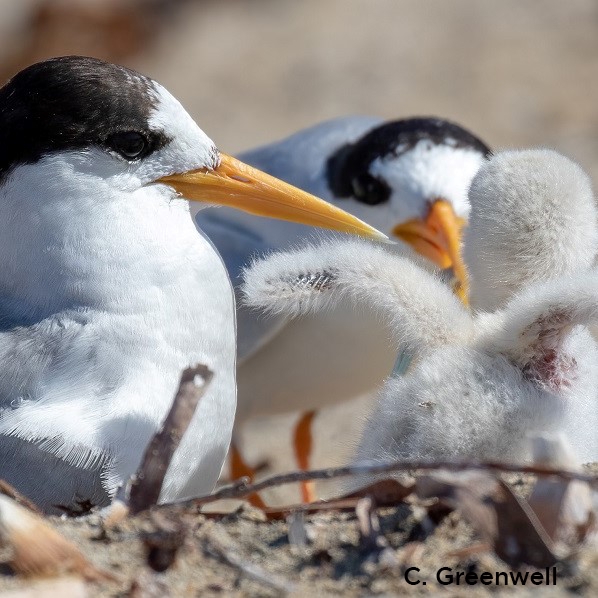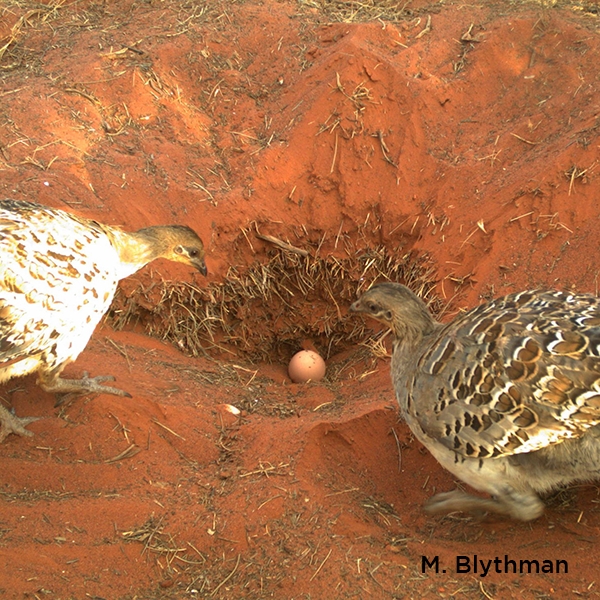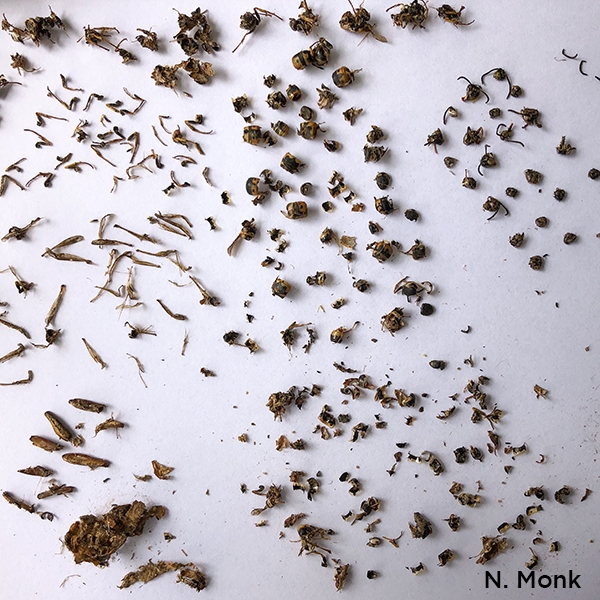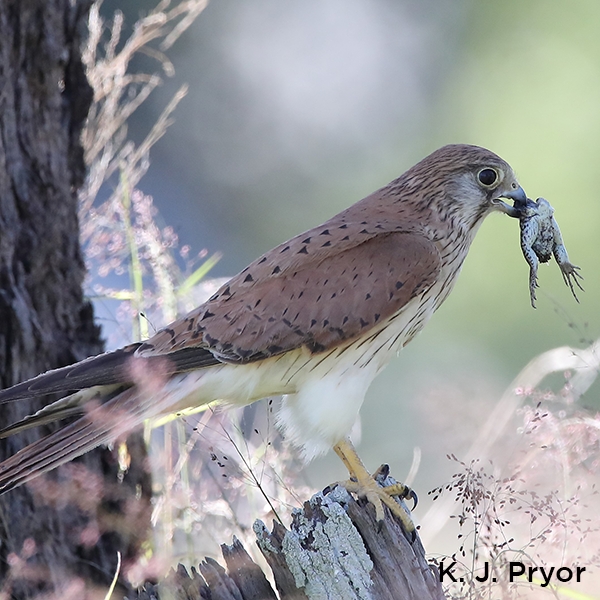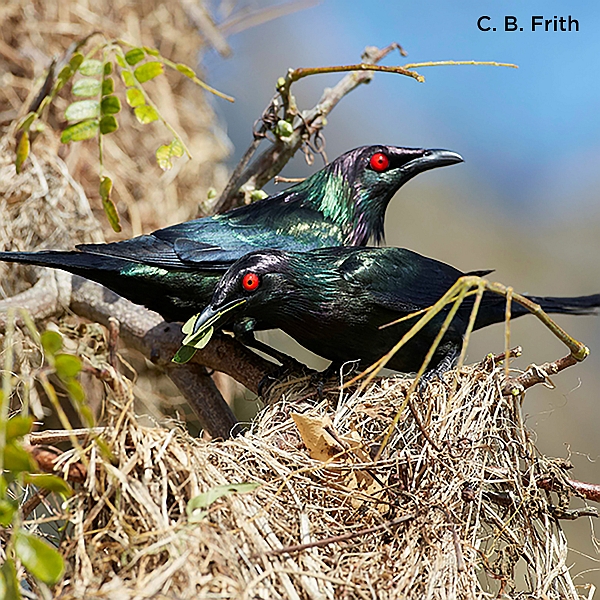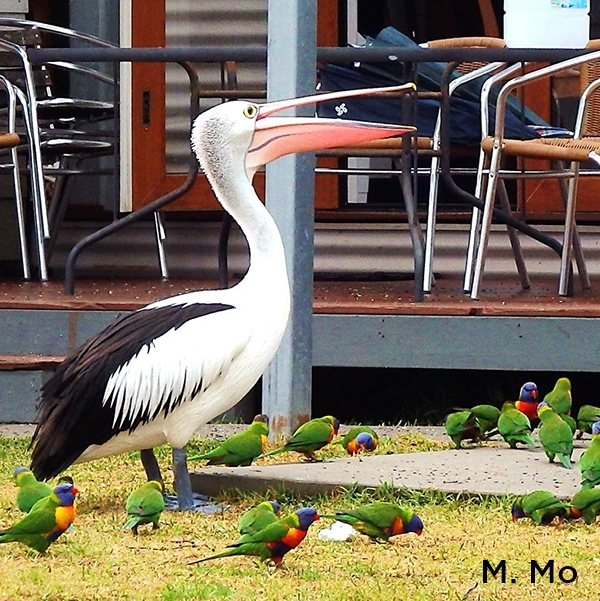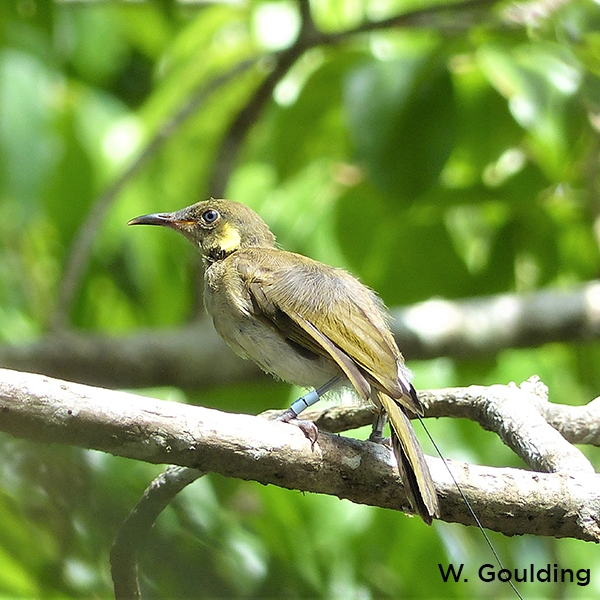Documenting demise? Sixteen years observing the Swift Parrot Lathamus discolor in suburban Hobart, Tasmania
Andrew B. Hingston
pp. 97-108
Abstract
The Swift Parrot Lathamus discolor is listed as Critically Endangered because modelling suggests that its population is declining by >80% within three generations (12–18 years) as a result of just one of many factors impacting the species: predation by introduced Sugar Gliders Petaurus breviceps. Unfortunately, verification of this prediction through monitoring of the entire population across its breeding range is difficult because of the amount of observer effort required to count all individuals within the often dense canopies of Eucalyptus trees, where it forages predominantly from flowers. This study entails 16 years of opportunistic observations at a single location within this species’ breeding range. Regression models indicated that over 16 breeding seasons the mean size of the largest flock per month declined by ~90%, and grand mean size of all flocks per month by ~70%. This was not the result of decreasing local flowering intensity in the Swift Parrot’s favoured food plants, as adjusting the two measures of abundance for local inter-annual variation in flowering had little effect on the rates of decline. This concordance between observations at the local scale and modelling of the entire population supports the findings of the modelling, suggesting that urgent action is required to prevent extinction of this species.
References
Allchin, R., Kirkpatrick, J. & Kriwoken, L. (2013). On not protecting the parrot: Impact of conservation and planning legislation on an endangered species in Tasmania. Journal of International Wildlife Law and Policy 16, 81–104.
Beaumont, L.J., McAllan, I.A.W. & Hughes, L. (2006). A matter of timing: Changes in the first date of arrival and departure of Australian migratory birds. Global Change Biology 12, 1339–1354.
Brereton, R. (1996a). The Swift Parrot Lathamus discolor in Southeast Tasmania: Conservation Research Statement. Project No. 230. Australian Nature Conservation Agency Endangered Species Program, Canberra.
Brereton, R. (1996b). The Swift Parrot Lathamus discolor Recovery Plan. Parks and Wildlife Service, Department of Environment & Land Management, Hobart.
Brereton, R. (1999). Swift Parrot Recovery Plan 1997-2000. Department of Primary Industries, Water & Environment, Hobart.
Brown, P.B. (1989). The Swift Parrot Lathamus discolor (White). A Report on its Ecology, Distribution and Status, Including Management Considerations. Department of Lands, Parks & Wildlife, Hobart.
Campbell, C.D., Sarre, S.D., Stojanovic, D., Gruber, B., Medlock, K., Harris, S., MacDonald, A.J. & Holleley, C.E. (2018). When is a native species invasive? Incursion of a novel predatory marsupial detected using molecular and historical data. Diversity and Distributions 24, 831–840.
Gartrell, B.D. (2002a). Nutritional and Physiological Constraints on Reproduction in the Endangered Swift Parrot Lathamus discolor. PhD thesis. University of Tasmania, Hobart. 108 Australian Field Ornithology
A.B. Hingston Gartrell, B.D. (2002b). Assessment of the reproductive state in male swift parrots (Lathamus discolor) by testicular aspiration and cytology. Journal of Avian Medicine and Surgery 16, 211–217.
Gartrell, B.D. & Jones, S.M. (2001). Eucalyptus pollen grain emptying by two Australian nectarivorous psittacines. Journal of Avian Biology 32, 224–230.
Gartrell, B.D., Jones, S.M., Brereton, R.N. & Astheimer, L.B. (2000). Morphological adaptations to nectarivory of the alimentary tract of the Swift Parrot Lathamus discolor. Emu 100, 274–279.
Geyle, H.M., Woinarski, J.C.Z., Baker, G.B., Dickman, C.R., Dutson, G., Fisher, D.O., Ford, H., Holdsworth, M., Jones,
M.E., Kutt, A., Legge, S., Leiper, I., Loyn, R., Murphy, B.P., Menkhorst, P., Reside, A.E., Ritchie, E.G., Roberts, F.E.,
Tingley, R. & Garnett, S.T. (2018). Quantifying extinction risk and forecasting the number of impending Australian bird and mammal extinctions. Pacific Conservation Biology 24, 157–167.
Heinsohn, R., Olah, G., Webb, M., Peakall, R. & Stojanovic, D. (2019). Sex ratio bias and shared paternity reduce individual fitness and population viability in a critically endangered parrot. Journal of Animal Ecology 88, 502–510.
Heinsohn, R., Webb, M., Lacy, R., Terauds, A., Alderman, R. & Stojanovic, D. (2015). A severe predator induced population decline predicted for endangered, migratory swift parrots (Lathamus discolor). Biological Conservation 186, 75–82.
Hingston, A.B. (2002). Pollination ecology of Eucalyptus globulus Labill. subsp. globulus and Eucalyptus nitens (Deane and Maiden) Maiden (Myrtaceae). PhD thesis. University of Tasmania, Hobart.
Hingston, A.B. (2019). Partial replacement of Rainbow Lorikeets Trichoglossus haematodus moluccanus by hybrid lorikeets in Hobart, Tasmania. Australian Field Ornithology 36, 64–70.
Hingston, A.B. & Piech, M. (2011a). Parrots, people and plants: Urban tree removal and habitat loss for the endangered Swift Parrot, Lathamus discolor. Papers and Proceedings of the Royal Society of Tasmania 145, 1–4.
Hingston, A.B. & Piech, M. (2011b). Eucalypt flower production in the suburbs and bush: Implications for the endangered Swift Parrot Lathamus discolor. Pacific Conservation Biology 17, 338–346.
Hingston, A.B. & Potts, B.M. (2005). Pollinator activity can explain variation in outcrossing rates within individual trees. Austral Ecology 30, 319–324.
Hingston, A.B. & Wotherspoon, S. (2017). Introduced social bees reduce nectar availability during the breeding season of the Swift Parrot (Lathamus discolor). Pacific Conservation Biology 23, 52–62.
Hingston, A.B., Gartrell, B.D. & Pinchbeck, G. (2004). How specialized is the plant-pollinator association between Eucalyptus globulus ssp. globulus and the swift parrot Lathamus discolor? Austral Ecology 29, 624–630.
Hird, D. (1998). Vertebrate fauna of Lambert Park – Skyline Reserve. Appendix C. In: Hickie, J. (Ed.) Lambert Park Skyline Reserve Management Plan. Parks and Landscape Unit, Hobart City Council, Hobart.
Kasuya, E. (2019). On the use of r and r squared in correlation and regression. Ecological Research 34, 235–236. Marsden, S.J. & Royle, K. (2015). Abundance and abundance change in the world’s parrots. Ibis 157, 219–229.
Olah, G., Butchart, S.H.M., Symes, A., Guzmán, I.M., Cunningham, R., Brightsmith, D.J. & Heinsohn, R. (2016). Ecological and socio-economic factors affecting extinction risk in parrots. Biodiversity and Conservation 25, 205–223.
Olah, G., Theuerkauf, J., Legault, A., Gula, R., Stein, J., Butchart, S., O’Brien, M. & Heinsohn, R. (2018). Parrots of Oceania – a comparative study of extinction risk. Emu 118, 94–112.
Pfennigwerth, S. (2008). Minimising the Swift Parrot Collision Threat. Guidelines and Recommendations for Parrot-safe Building Design. WWF-Australia, Sydney.
Porfirio, L.L., Harris, R.M.B., Stojanovic, D., Webb, M.H. & Mackey, B. (2016). Projected direct and indirect effects of climate change on the Swift Parrot, an endangered migratory species. Emu 116, 273–283.
Rueda-Cediel, P., Anderson, K.E., Regan, T.J. & Regan, H.M. (2018). Effects of uncertainty and variability on population declines and IUCN Red List classifications. Conservation Biology 32, 916–925.
Saunders, D.L. & Russell, T. (2016). Settlement and Swift Parrots― historic and ongoing habitat loss for a critically endangered species (1788–2016). Papers and Proceedings of the Royal Society of Tasmania 150, 55–73.
Saunders, D.L. & Tzaros, C.L. (2011). National Recovery Plan for the Swift Parrot Lathamus discolor. Birds Australia, Melbourne.
Stojanovic, D., Alves, F., Cook, H., Crates, R., Heinsohn, R., Peters, A., Rayner, L., Troy, S.N. & Webb, M.H. (2018b). Further knowledge and urgent action required to save Orange-bellied Parrots from extinction. Emu 118, 126–134.
Stojanovic, D., Cook, H.C.L., Sato, C., Alves, F., Harris, G., McKernan, A., Rayner, L., Webb, M.H., Sutherland, W.J. & Heinsohn, R. (2019). Pre-emptive action as a measure for conserving nomadic species. Journal of Wildlife Management 83, 64–71.
Stojanovic, D., Olah, G., Webb, M., Peakall, R. & Heinsohn, R. (2018a). Genetic evidence confirms severe extinction risk for critically endangered swift parrots: Implications for conservation management. Animal Conservation 21, 313–323.
Stojanovic, D., Rayner, L., Webb, M. & Heinsohn, R. (2017). Effect of nest cavity morphology on reproductive success of a critically endangered bird. Emu 117, 247–253.
Stojanovic, D., Terauds, A., Westgate, M.J., Webb, M.H., Roshier, D.A. & Heinsohn, R. (2015). Exploiting the richest patch has a fitness pay-off for the migratory swift parrot. Journal of Animal Ecology 84, 1194–1201.
Stojanovic, D., Webb, M.H., Alderman, R., Porfirio, L.L. & Heinsohn, R. (2014). Discovery of a novel predator reveals extreme but highly variable mortality for an endangered migratory bird. Diversity and Distributions 20, 1200–1207.
Stojanovic, D., Webb nee Voogdt, J., Webb, M., Cook, H. & Heinsohn, R. (2016). Loss of habitat for a secondary cavity nesting bird after wildfire. Forest Ecology and Management 360, 235–241.
Swift Parrot Recovery Team (2001). Swift Parrot Recovery Plan. Department of Primary Industries, Water & Environment, Hobart.
Webb, M.H., Holdsworth, M.C. & Webb, J. (2012). Nesting requirements of the endangered Swift Parrot (Lathamus discolor). Emu 112, 181–188.
Webb, M.H., Stojanovic, D. & Heinsohn, R. (2019). Policy failure and conservation paralysis for the critically endangered swift parrot. Pacific Conservation Biology 25, 116–123.
Webb, M.H., Terauds, A., Tulloch, A., Bell, P., Stojanovic, D. & Heinsohn, R. (2017). The importance of incorporating functionalhabitats into conservation planning for highly mobile species in dynamic systems. Conservation Biology 31, 1018–1028.
Webb, M.H., Wotherspoon, S., Stojanovic, D., Heinsohn, R., Cunningham, R., Bell, P. & Terauds, A. (2014). Location matters: Using spatially explicit occupancy models to predict the distribution of the highly mobile, endangered swift parrot. Biological Conservation 176, 99–108.
